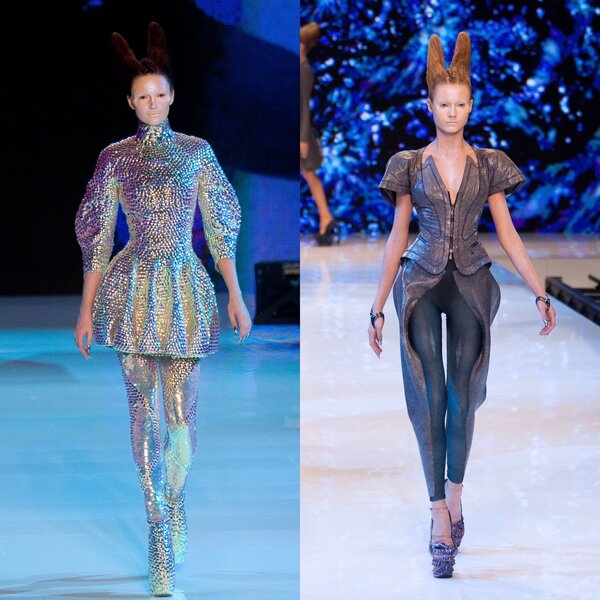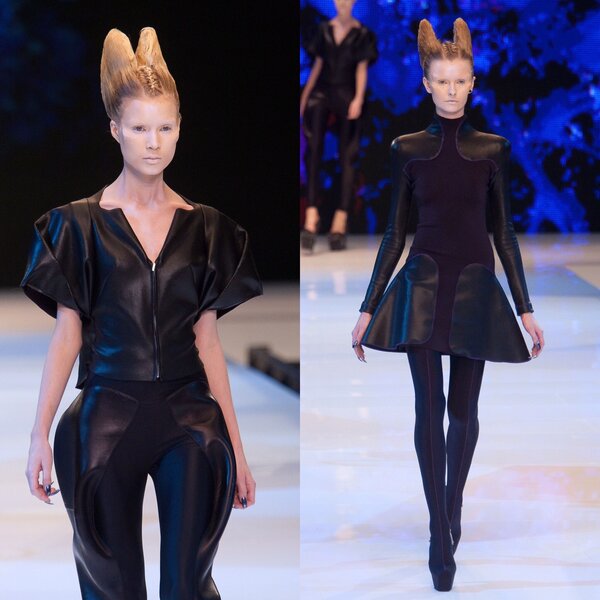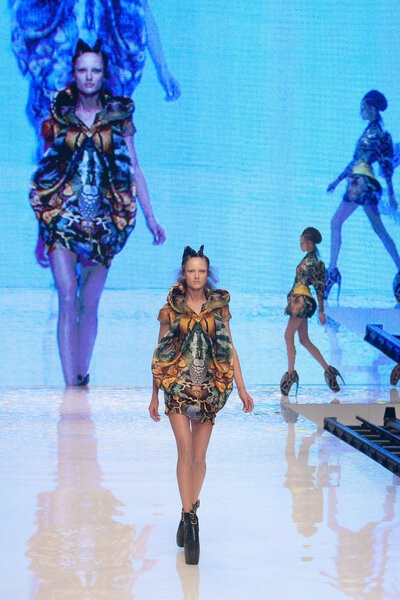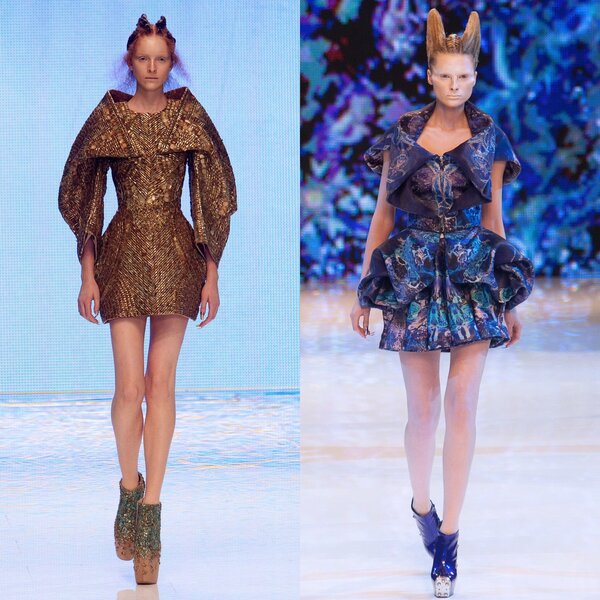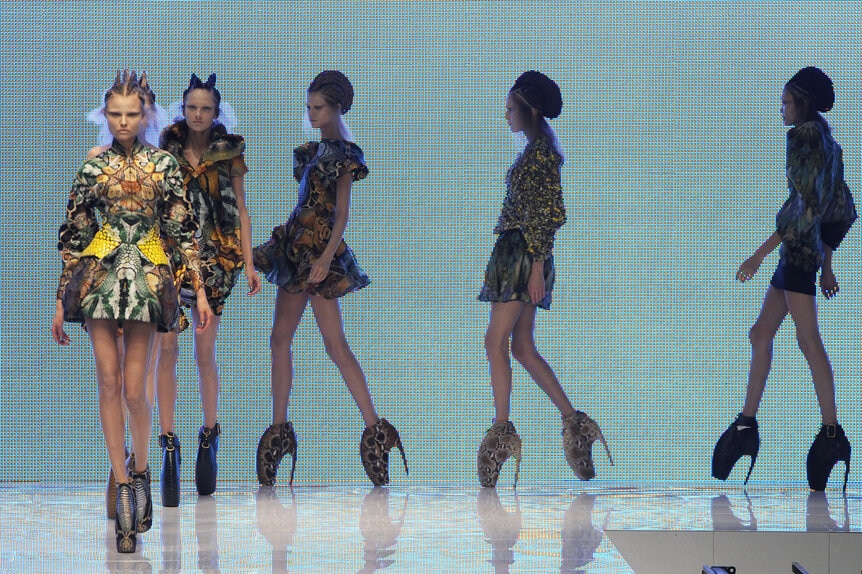Create a free profile to get unlimited access to exclusive videos, sweepstakes, and more!
The surprise Alien and Predator influences in Alexander McQueen's final runway show
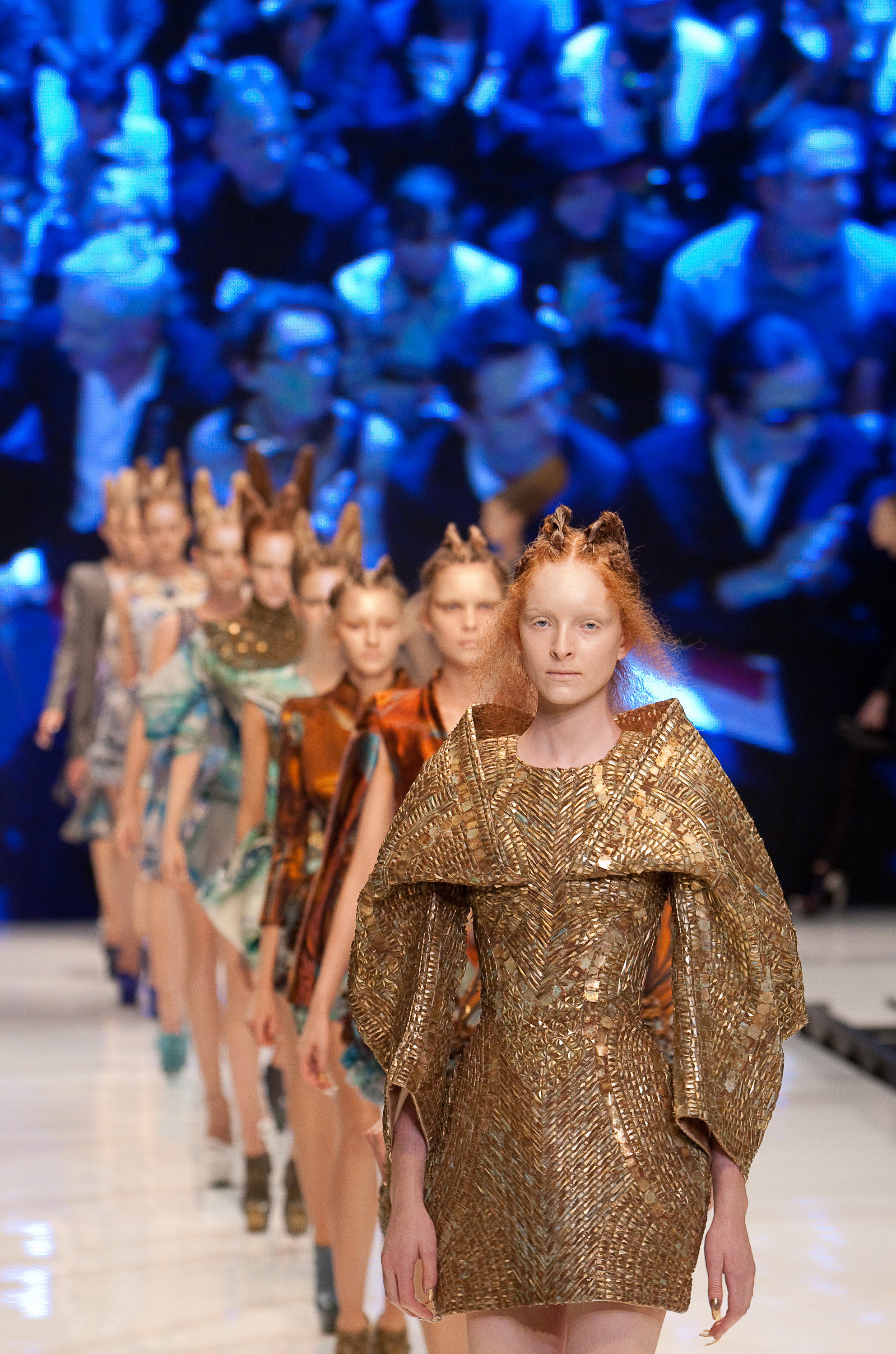
Past, present, and future can serve as jumping-off points for fashion inspiration — and one of the most iconic collections of the last 20 years managed aspects of classical philosophy, climate change, science-fiction movies, and technology. On October 6, 2009, at the Palais Omnisports de Bercy in Paris, Alexander McQueen unveiled Plato’s Atlantis, which would sadly be his final show (as he passed away the following February) and also one of his most memorable.
The show took its name from the Greek philosopher, who also wrote about the legendary island that was sunk into the ocean by earthquakes and fire. The mythic technological advancements of this utopian location have featured in many stories since, with Aquaman being one of the latest in a long list. In fact, some of McQueen's designs look like they could be worn by Amber Heard and Nicole Kidman, both on the red carpet and under the sea. In McQueen's visual exploration of what the world would look like after man ravaged the planet for resources, Atlantis provides a potential haven after the ice caps have melted. What lies beneath the sea is humanity's last hope. It is an apocalyptic vision that results in beautiful new creatures, marrying land, sea, and even figures who look like they have come from outer space.
Sci-fi’s long history with fashion has only continued since, but in this case, the movies of James Cameron, Ridley Scott, and John McTiernan provided the foundation. The Abyss is one reference point, as McQueen looked to ocean creatures for silhouette and print. The ocean and man's impact comes in the form of the ‘Titanic’ shoe, which is made of metal and leather resembling the hull of the vessel that lies at the bottom of the Atlantic, having been bested by nature.
However, this isn’t the only movie McQueen gave a nod to with the materials and construction of this heel, as leather worn by the Predator also plays its role. Much like the citizens of Atlantis, the Predator is from a more technologically sophisticated world than our own.
In the excellent documentary McQueen (currently available to watch on Amazon Prime), his fashion education is outlined, including the notion of looking beyond clothes as a point of visual research. “He didn’t know you could take a subject that had no relation to clothing and actually get inspiration from that to design clothing,” explains Red or Dead designer John McKitterick, when he told McQueen that the Space Baby line was inspired by the moon landing.
Before Plato’s Atlantis, McQueen drew from his family heritage (including witches in Salem) and the Jack the Ripper murders in previous collections, which often looked at the beauty in horror.
Plato’s Atlantis was a culmination of everything that had come before it in both presentation and design. Theatricality and grand showmanship was always part of the McQueen experience — whether a vision of dystopia with cars on fire, separating attendees from the models with a horror-like asylum scenario, or robots incorporated into the performance. An eerie and ethereal hologram of Kate Moss in the Fall '06 Widows of Culloden show preceded the use of AI by Rag & Bone, and the lines between performance and clothing have only continued to blur since.
In the fall of 1999, robots typically used to paint cars were part of a live creation process in a balletic sequence, which saw a white dress spray painted while the model was wearing it. A decade later, robots were used to film the runway show that would be broadcast online, a Fashion Week first. Live streams are pretty common in 2019, but 10 years ago this opened up a formerly 'invite-only' experience to everyone. There were some bumps along the way as Lady Gaga tweeted just before the transmission that a new song would debut during this show, crashing the website (but you can see the show in all its glory below). "Bad Romance" plays over the stunning final moments, in which the models strut (as best they can) down the runway in the 12-inch 'Armadillo' shoes looking like the most stylish army from another planet or dimension.
Fashion and technology continue to evolve alongside each other, and Alexander McQueen was at the forefront. For Vogue, in 2009 Sarah Mower wrote after Plato’s Atlantis debuted, “the way he's embracing new computer technologies and the drama of the moving image puts him at the leading edge of change.” We don’t know what McQueen would have done next, but his innovative use goes beyond an online Livestream. 3-D printing has become a staple practice in fashion and costume design, but in 2009, it was still a novelty.
The ‘Alien’ shoe, as featured in this collection, used a 3-D printed resin to resemble the beautiful nightmare of the Xenomorph. Paying homage to H.R. Giger — the iconic designer of Alien — informed the biomorphic spine of the shoe. Models looked like creatures from another planet fused with a human skeleton; the overall collection offered a subtle evolution as each model walked down the runway, with 11 different pairs of this design in a variety of colors from bone white to aqua blue.
Bold color played a big part in this attention-grabbing collection, as the unique designs were brought to life via digital printing. Reptiles, moths, and fish lent their likeness to the vivid dress imagery, with McQueen also using different aspects of Mother Nature for silhouettes that featured nipped-in waists and exaggerated hips. Pronounced shoulders were inspired by creatures like jellyfish, turning sea creatures into sartorial influencers. If we are going to return to the ocean eventually to survive an environmental catastrophe, then the human body will have to evolve. Thankfully, this is no Waterworld.
It wasn’t just the clothing that took on otherworldly aspects; braided hair gave an illusion of horns, while subtle prosthetic face enhancements added to this futuristic, almost Star Trek quality. Flesh boots and skin ruffles are some of the recent examples of how fashion continues to stretch the imagination while embracing fantasy. Without McQueen, it hard to imagine these more out-there looks experiencing such popularity.
It has been 10 years since Plato’s Atlantis and one of the defining pieces is the hoof-like Armadillo Shoes that look impossible to walk in. Often associated with Lady Gaga and made out of wood, these works of art were never intended for commercial use. The shot above, with the video screen reflecting on the runway, resembles an image that could be captured in the pages of a science-fiction novel.The climate crisis has existed for longer than the decade since this runway show, but there is almost something prescient in this presentation and the urgency we now face in finding a solution to the damage already done. It is a testament to Alexander McQueen and the works of science-fiction and fantasy referenced in this collection that something can be equal parts beautiful and terrifying. By marrying the fragility and strength of nature with technological innovation, there is an element of hope. Will we find our Atlantis, or is this just a sci-fi sartorial dream born out of a nightmare?
The views and opinions expressed in this article are the author's, and do not necessarily reflect those of SYFY WIRE, SYFY, or NBC Universal.
